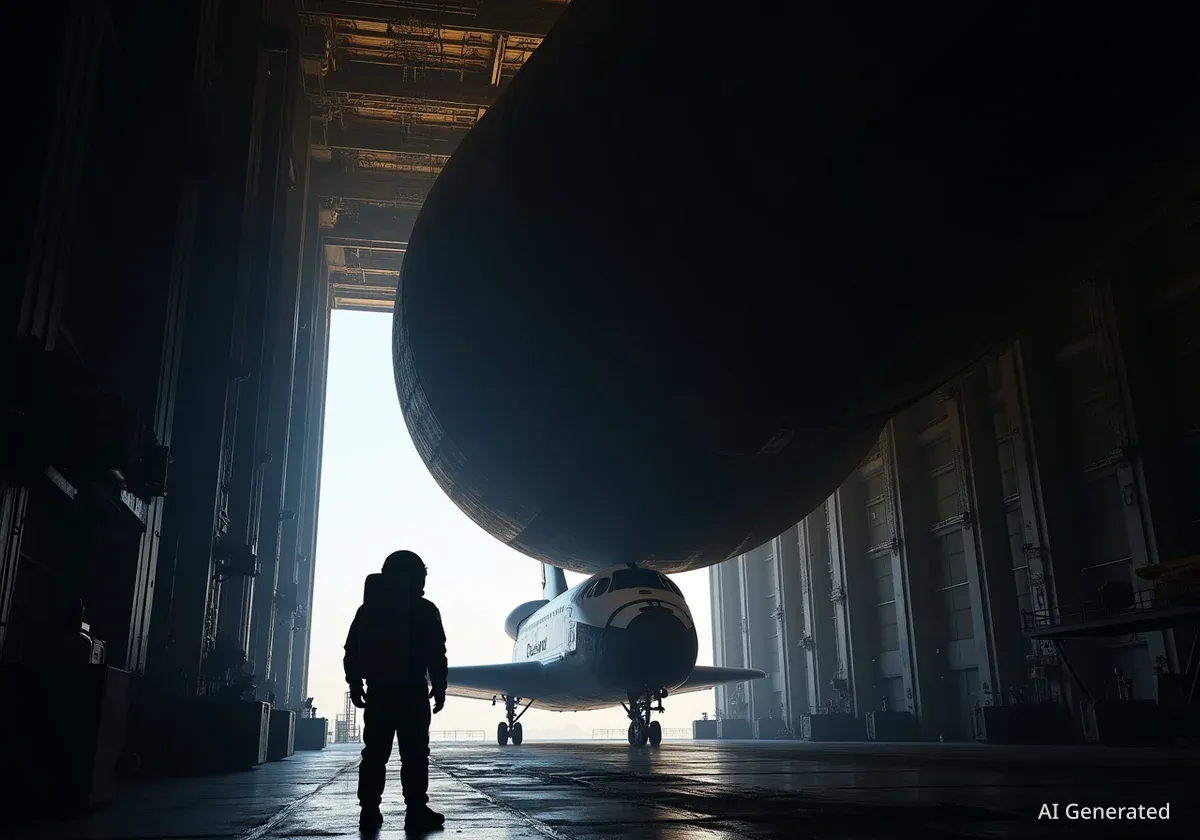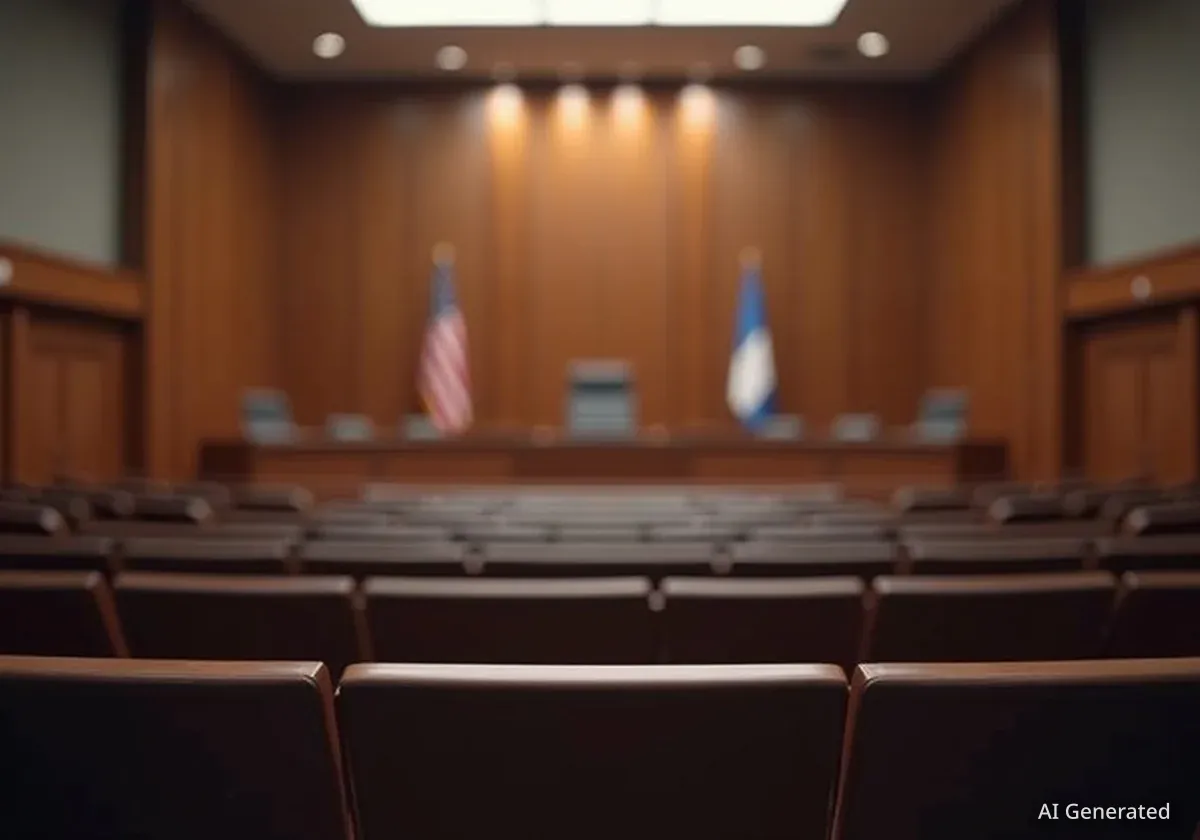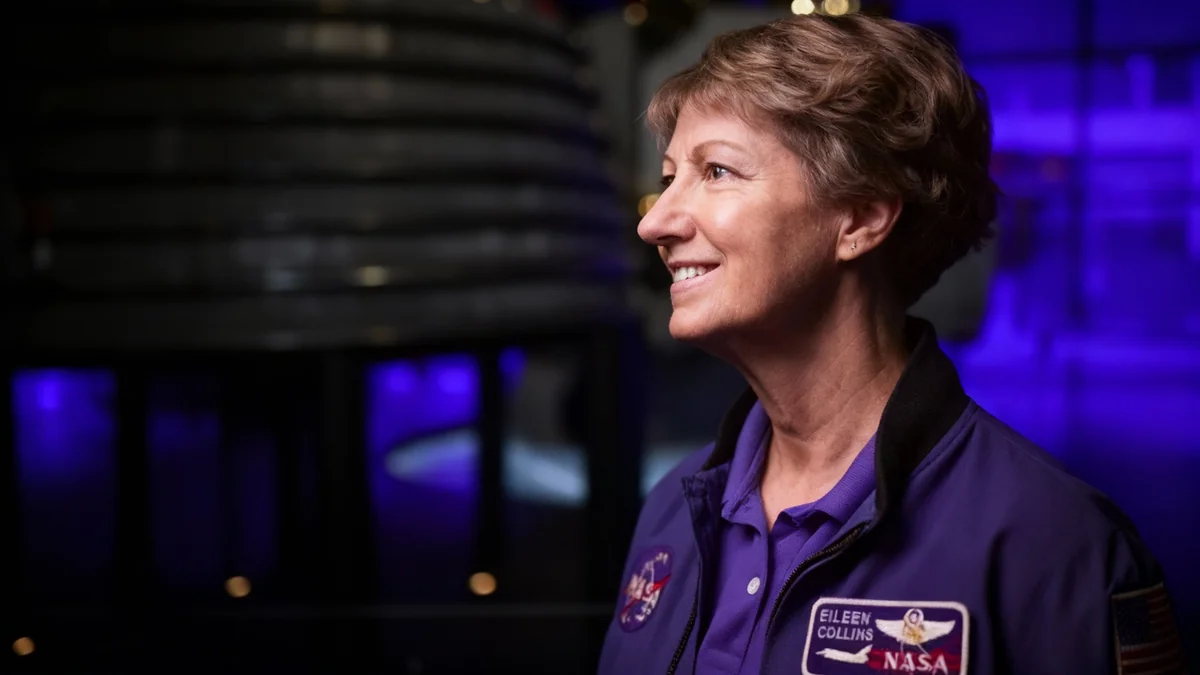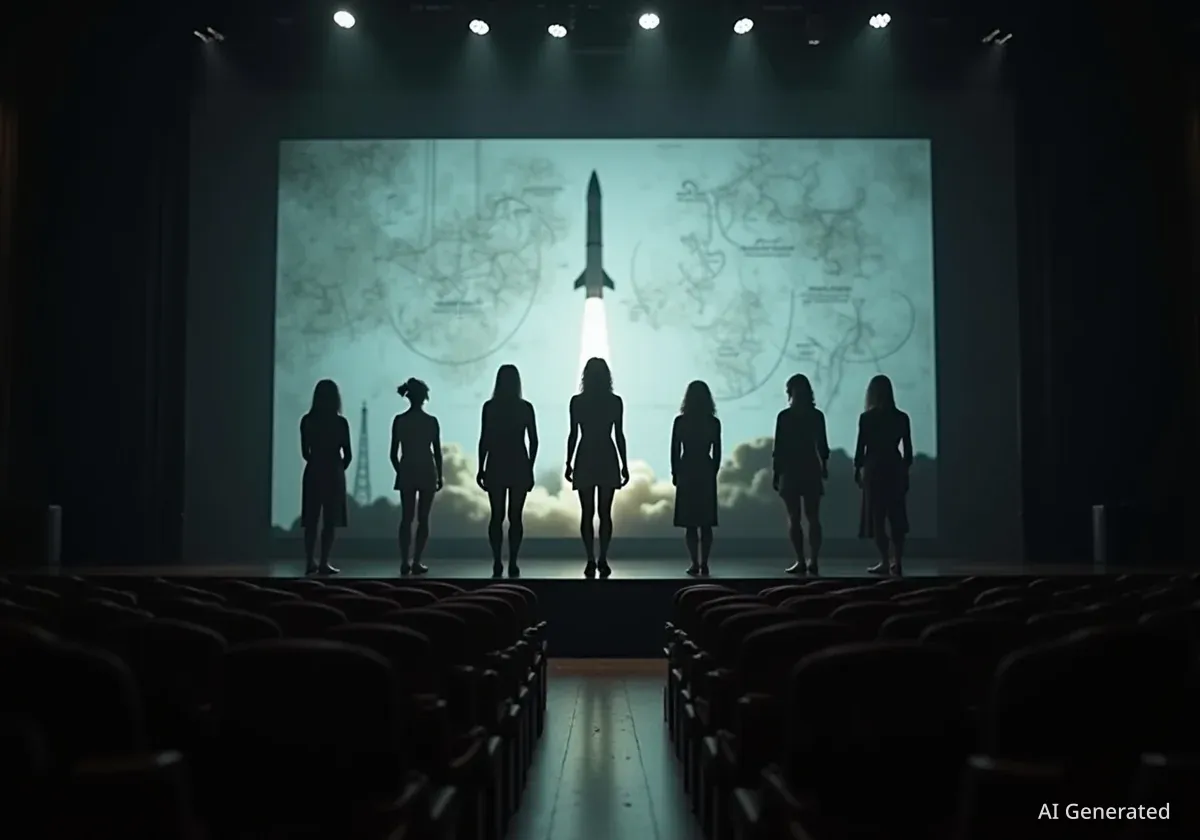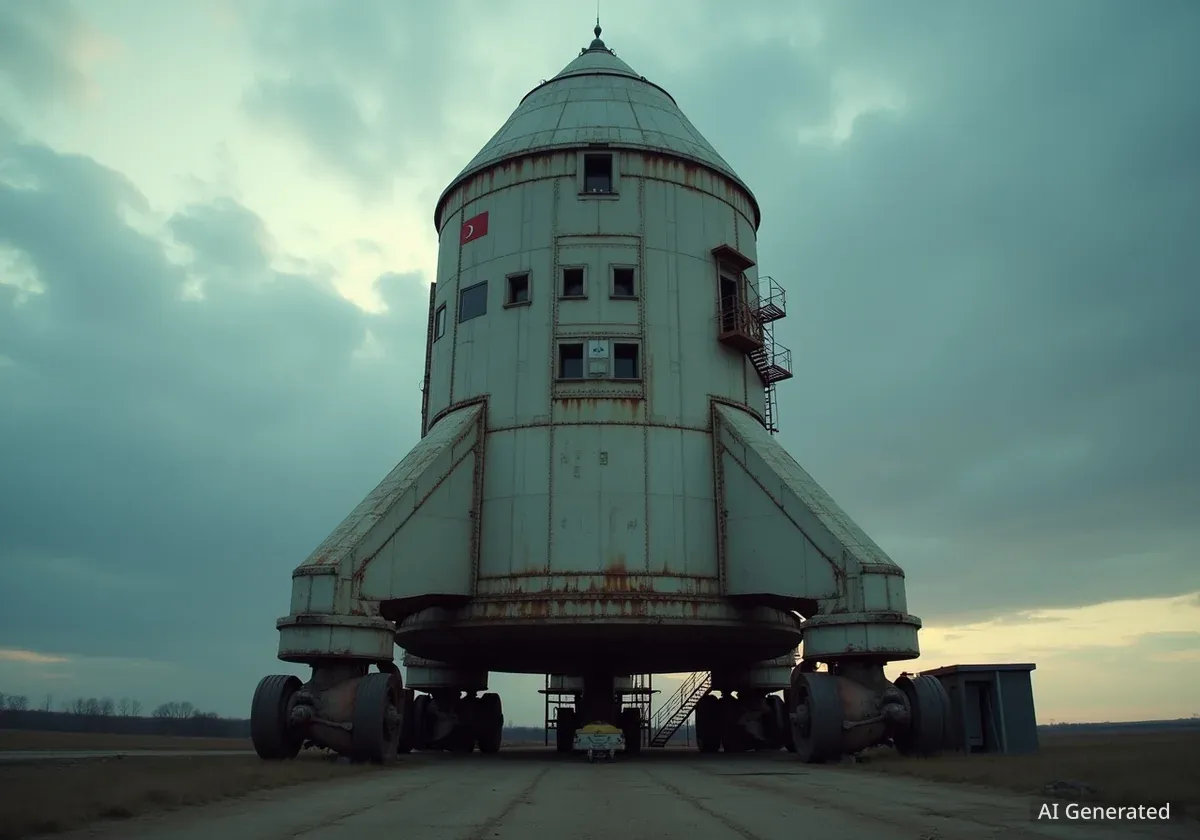Eileen Collins, the first woman to pilot and command a NASA space shuttle, is sharing new details about the technical challenges that led to the program's retirement. In recent reflections tied to a new documentary about her life, Collins discussed the immense pressure of her historic missions and the critical safety lessons learned from the Columbia tragedy.
Key Takeaways
- Col. Eileen Collins was the first woman to pilot a space shuttle in 1995 and the first to command one in 1999.
- She commanded STS-114, the first mission after the 2003 Columbia disaster, which also experienced a dangerous foam-shedding event.
- Collins identifies the shuttle's exposed heat shield and lack of a crew escape system as the two primary reasons for its retirement in 2011.
- Her story is the subject of a new documentary, "Spacewoman," which she hopes will inspire future generations.
A Trailblazing Career in a Male-Dominated Field
Eileen Collins broke significant barriers at NASA, becoming a prominent figure in human spaceflight. Her first historic flight was as pilot of the space shuttle Discovery in 1995. Four years later, in 1999, she took command of the space shuttle Columbia, another first for a woman.
These achievements placed her under intense public scrutiny. Collins acknowledged the weight of being the first woman in these roles, a fact often highlighted by NASA and the media. This created an internal pressure to perform flawlessly, as she felt she was representing all women in the field.
"So when I made a mistake in the simulator, I would feel like ‘ah, Eileen, you can't do that because you are representing women,'" Collins stated. "You're the first. People are going to watch you and expect, or, I would say, assume, that that's the way women operate.”
Despite this pressure, Collins said it also motivated her to perform at her best. She compared the experience to that of an athlete performing in front of a large audience, where the nervousness can drive a higher level of performance. She was conscious that her work would pave the way for future female astronauts.
A Rare Achievement
Out of 133 space shuttle landings, only three were overseen by a female commander. Eileen Collins commanded two of those missions. The only other woman to command a shuttle was Pam Melroy.
Commanding the Return to Flight Mission
Collins faced one of her greatest challenges when she was assigned to command STS-114, the mission designated as the "return to flight" after the catastrophic loss of the space shuttle Columbia in 2003. The Columbia disintegrated upon reentry, resulting in the deaths of all seven crew members.
An investigation revealed that a piece of insulating foam from the external fuel tank had broken off during launch, striking and breaching the heat shield on the shuttle's wing. During reentry, superheated gases entered the wing, leading to the vehicle's destruction.
The Columbia Disaster
On February 1, 2003, the Space Shuttle Columbia (STS-107) broke apart while reentering Earth's atmosphere. The cause was damage to the thermal protection system on the leading edge of the orbiter's left wing, sustained during launch. Reentry temperatures can exceed 3,000 degrees Fahrenheit (1,650 Celsius), making any breach in the heat shield fatal.
Throughout the two-year investigation, Collins never considered stepping down from the mission. She actively opposed discussions within the U.S. government about ending the shuttle program prematurely.
"I wanted to be the commander of that mission. There was no way I was going to quit that mission," Collins explained. "I knew that we needed the shuttle to build the space station, but on the other hand, we had seven astronauts that just lost their lives, and if we had shut down the shuttle program, that was like saying what they died for wasn't worth it."
A Near Repeat of Disaster
When STS-114 launched in 2005, NASA and the world watched with heightened concern. Despite extensive efforts to fix the foam-shedding issue, a significant piece of foam once again broke away from the external tank during liftoff.
The debris came from an area known as the protuberance aerodynamic load (PAL) ramp, which protected cables and lines. Onboard cameras captured the event, showing the foam piece narrowly missing the shuttle's wing.
"That went right under our wing, and it just missed hitting us," Collins recalled. "And that was a big failure. That was a big mistake." The crew safely reached orbit, but the incident forced NASA to ground the shuttle fleet once more until July 2006. For all subsequent flights, the PAL ramp was removed entirely.
Why the Space Shuttle Program Ended
The recurring foam issue highlighted a fundamental design flaw in the space shuttle system. According to Collins, this vulnerability was one of the two main reasons the program was retired in 2011.
1. Exposed Heat Shield
The shuttle orbiter was mounted to the side of the external fuel tank and solid rocket boosters. This configuration left its delicate thermal protection tiles exposed to debris during the violent ascent into orbit. Modern crewed vehicles, such as the SpaceX Crew Dragon and Boeing Starliner, use a capsule design that sits atop the rocket, placing the crew and vehicle out of the primary debris path.
"So what we've learned in the end is we will never, ever again have a launch vehicle where the heat shield is exposed to falling debris," Collins said, emphasizing the critical lesson learned.
2. No Crew Escape System
The second major factor was the shuttle's lack of a viable launch escape system. If a catastrophic failure occurred on the launch pad or during ascent, the crew had almost no chance of survival. Escape was only possible through a side hatch, an impractical option during an explosion.
In contrast, modern capsules are equipped with abort systems that can fire powerful rockets to push the capsule away from a failing booster, allowing it to parachute safely back to Earth.
Despite its flaws, Collins noted the shuttle had positive attributes, particularly its ability to land like an airplane on a runway. This provided a much gentler return for the crew compared to the high-G force splashdowns of capsules in the ocean.
A Life on Screen in "Spacewoman"
Collins' remarkable story is now the focus of a documentary titled "Spacewoman." When producer Keith Haviland first approached her, she was hesitant to participate, telling him, "No, absolutely no. I didn't want my life on the screen."
The process required a significant commitment of time and privacy, involving interviews with family and friends and searching for old photographs. After nearly a year, she changed her mind.
"The reason I said yes is I had to stop being selfish and just thinking about me and think about the message and how that would help other people," Collins stated.
The film, which features an original score performed by an orchestra, aims to inspire future generations. It has been screened at various venues, including Florida Tech, and is expected to be available for streaming in 2026. Collins praised the film crew for their work, hoping the documentary's message resonates with viewers.

